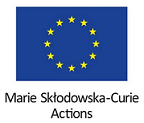TLALOC: Titan’s Lakes and Lower Clouds - investigation of the enigmatic methane cycle with a new advanced model

Acronym: TLALOC
Specific programme: Marie Skłodowska-Curie actions (MSCA)
UPV/EHU Partner Status: Single beneficiary
UPV/EHU PI: RICARDO HUESO ALONSO
Project start: 14/07/2021
Project end: 31/08/2024
Brief description: Saturn’s moon Titan is the only world in the Solar System besides Earth where rains reach the surface. Due to the cryogenic temperatures, these rains are not made of water but of methane. It accumulates in polar lakes and mud terrains, which seasonally evaporate, producing a methane hydrological cycle. Cloud localisations and precipitation events unveiled by recent missions are still not well understood. Climate models would help this endeavor, but they are currently missing crucial physical descriptions (especially air-surface interactions). The T’LALOC project aims to solve Titan’s complex methane cycle by developing a model to address the currently open key questions: (Q1) the influence of lakes and wetlands; (Q2) seasonal effects; and, (Q3) methane storm impacts. We will obtain an unprecedented next-generation Titan global climate model by incorporating and improving building blocks from three existing regional models developed at SwRI, LMD and UPV/EHU. Each of these models individually specializes in one of the issues above (Q1-2-3). Upon completion we will obtain the first advanced model able to reproduce the hydrological cycle and interpret observations of clouds and rain events. The project will start at a strategic timing: close to the end of the Cassini-Huygens mission (2004-2017), at the first light of the James Webb Space Telescope (JWST, 2022), during the preparation of the Dragonfly mission (launch in 2026) and at the definition of a future EU mission. The large set of data by Cassini and the new data by JWST have to be exploited in urgency to improve our current atmospheric models and to be able to simulate weather conditions at the surface, which impacts the Dragonfly rotorcraft operations and science return. This project brings together world leaders in Titan climate modelling from the US and EU, sows the seeds for collaboration on future missions to Titan, and positions the fellow and the host EU teams as references in Titan climate modelling.
